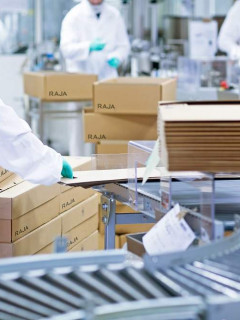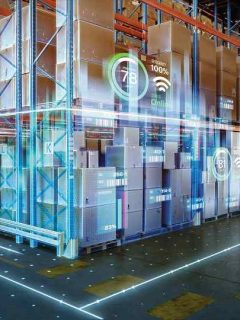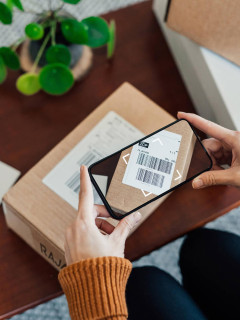Today, more and more companies are taking an interest in the various environmental standards that can be obtained. And with good reason: in addition to being an important part of a company’s overall CSR policy, they have a considerable impact on its brand image. Indeed, the perception of customers, but also of suppliers and other partners about the company, is greatly improved by obtaining an environmental standard.If this is a cross-cutting concern, your logistics department plays a central role in obtaining a standard. Let’s see which environmental standards should be envisaged for your company, and how logistics can participate in their deployment.
Why take an interest in corporate environmental standards?
There is no shortage of good reasons for seeking environmental certification for your company or organisation
- Ensuring compliance with legal requirements. Environmental concerns are leading to new directives and laws that companies must comply with. Obtaining environmental standards allows you to ensure compliance with these laws as part of a comprehensive approach.
- Enhanced brand image. Consumers are increasingly aware of the impact that the products and services they consume have on the planet. Not being environmentally aware means that you risk losing customers to certified companies.
- Positive impact on employees. Environmental protection values are also important for your company’s employees. As such, an environmentally responsible company benefits from a better employer brand image, becoming more attractive, increasing employee loyalty and generating a better engagement rate.
- Savings for better profitability: Often, reducing your impact on the environment means reducing your consumption. Reducing energy consumption, reusing containers, minimising the amount of material used to limit the weight of a package… In the long run, most of the measures taken to obtain certifications allow you to make savings.
the ISO 14001 environmental standard
ISO 14001 certification is one of the standards defined by the world standards organisation (ISO for International Standard Organisation), which includes some 140 countries. It constitutes a reference framework for taking environmental concerns into account in the activities of an organisation or a company. This recognised standard is based on 6 pillars to give your company a global vision of its environmental impact
- Use of resources
- Waste management
- Air pollution
- Water and sewage problems
- Soil contamination
- Climate change mitigation and adaptation
by taking the necessary steps to achieve ISO 14001, you are therefore part of a comprehensive process that addresses both environmental and business concerns.
How can logistics packaging contribute to this certification?
By adopting good operating habits, your logistics department can help to achieve this certification. Here is a non-exhaustive list of good practices that can be implemented to improve logistics performance
- Choose environmentally responsible packaging such as bio-based models or those made from recycled and/or recyclable materials.
- Reduce the use of raw materials by adapting the size of containers, or by using innovative, lightweight and/or material-saving cushioning materials.
- Optimise waste management and recovery in the warehouse by installing a selective sorting system.
- Reduce the weight-volume of the packages sent to reduce the space required by the transport vehicles.
si la norme ISO 14001 implique l’intégralité de l’entreprise, votre service logistique joue un rôle central dans son obtention. Vous pouvez le découvrir plus en détail dans notre article Tout savoir sur la certification ISO 14001 pour la logistique.

La norme environnementale ISO 14040
Elle consiste à l’analyse du cycle de vie du produit pour mettre en valeur une démarche d’éco-conception. Il s’agit d’une démarche destinée à prendre en considération les besoins en énergie et en matière à chaque étape de la vie d’un produit.
Ainsi, depuis la conception du produit, jusqu’à son recyclage, en passant par la logistique induite par sa distribution, tout est pris en compte. Chaque flux est analysé en vue d’être optimisé, l’objectif global étant d’améliorer les performances environnementales de l’entreprise.
Concrètement, les normes de la série ISO 14040 ne sont pas destinées à vous donner les méthodes et moyens à me
- The choice of raw materials: favour those that are already recycled or can be recycled. Materials that are environmentally friendly during extraction and processing should also be favoured.
- Less energy-intensive manufacturing: this involves examining the production stages to optimise energy flows.
- Improved product distribution and marketing: through grouped orders and optimised delivery routes.
- Use of the product with the lowest possible environmental impact.
- A real potential for recovery of the product at the end of its use: the collection of the object and its recycling should not be neglected to obtain an ISO 14040 standard.
how can logistics contribute to the achievement of this standard?
It can contribute effectively by adopting the following practices, among others
- Give preference to packaging made of recyclable materials, or even already made from recycled materials.
- Use returnable packaging, which reduces the need for new packaging when returning orders.
- Optimise the delivery rounds of your delivery staff by reducing the amount of empty space in the packages.
- Choose eco-responsible transporters: look out for any mention of an environmentally friendly transport policy in the contracts offered, and give preference to these service providers.
even if the ISO 14040 standard seems to impact only the product itself, obtaining the certification requires that you pay attention to many parameters. Once again, logistics is at the centre of attention in obtaining this standard, which demonstrates a great deal of environmental concern on the part of your company.
The ISO 14020 environmental standards
The ISO 14020 standard is not in itself intended to be obtained by companies. In fact, it groups together the general principles that govern all the ISO 14021 to 14025 standards. These principles are intended to allow end users to identify the origin or the ecological processes of the products concerned thanks to labelling that indicates their environmental impact. In order to govern the different certifications in this group, the ISO 14020 standard provides for three key points
- Information should be accessible to all stakeholders
- The requirements of different stakeholders should be taken into account
- Environmental labels should contain information for purchasers on the ecological aspects of products.
this group of standards therefore aims to certify labelling according to the information that appears on it, from a simple eco-label (ISO 14021) to the product’s environmental performance (ISO 14025). These certifications are therefore directly aimed at informing the end consumer. Obtaining certification in the ISO 14020 series thus demonstrates a commitment to transparency towards the customer, and invites confidence in your brand.
How can logistics participate in obtaining these standards?
Although product labelling itself is not directly the responsibility of the logistics department, it can nevertheless act to encourage the obtaining of this standard through two levers
- Label products from stock
- Have your logistics packaging eco-designed, so that it can be certified as eco-responsible
même s’il ne s’agit pas là de la préoccupation essentielle, une réflexion approfondie sur l’éco-responsabilité du secteur logistique permet d’augmenter les chances de votre entreprise à l’obtention d’une des certifications ISO 14020.
Ces différentes normes environnementales demandent plus ou moins d’implication pour l’entreprise. Tandis que la série de normes ISO 14020 est relativement simple à mettre en place, la norme 14001 demande une véritable remise en question du mode de management de l’entreprise. Cependant, une démarche plus approfondie implique généralement un impact beaucoup plus important sur l’image et les résultats de l’entreprise.
Et parce qu’il faut bien commencer quelque part, penchez-vous dans un premier temps sur l’impact environnemental de votre stratégie d’emballage, en appliquant la méthode 5R dans votre stratégie logistique.















